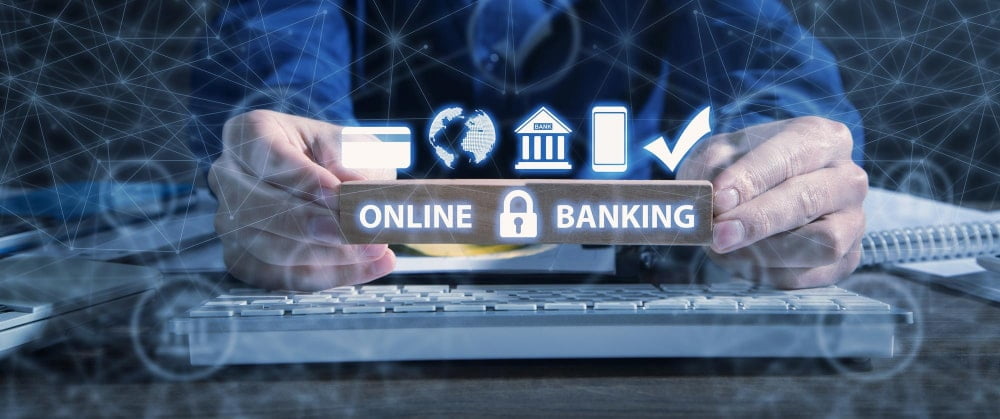Have you noticed a surge in banking fraud lately? It’s not just about financial losses; it’s also about eroding trust of customers.
In our digital age, where online transactions and electronic banking are on the rise, Is it creating opportunities for fraudsters?
According to SEON’s ‘Global Banking Fraud Index 2023,’ the global neobank market witnessed a remarkable increase in value, soaring by nearly $20 billion in 2022. Additionally, the report reveals that approximately 36% of all financial institutions encountered card fraud in 2022, marking a substantial 26% uptick compared to the previous year.
Fraud prevention is vital in today’s digital environment, safeguarding against financial misconduct and monetary losses. It preserves trust, complies with regulations, and reduces costs tied to investigations. By optimizing resources, reducing risks, and placing customer satisfaction, ITSM enhances banking performance and ensures regulatory compliance.
In this blog, you’ll gain insights into the critical topic of fraud prevention and detection, focusing on understanding ITSM’s role in securing banking security.
Related blog: Unlock the power of Zero Trust security in your enterprise through MSPs
Understanding Fraud in Banking: An Overview
Fraud in the banking sector is an ongoing and ever-evolving challenge that brings significant risks to banking institutions and their clients. It explores the multifaceted nature of fraud within the banking industry, highlighting the importance of robust prevention and detection mechanisms. Explore the complexities of the critical issue to safeguard the integrity of financial systems better and protect the interests of both banks and their customers.
Exploring Common Frauds in Banking
In the banking world, various tricks endanger the safety of money and transactions. This provides insights into potential frauds you may encounter, empowering you to safeguard finances. Let’s understand the banking world and navigate through it with confidence and security.
- Identity Theft: Identity theft starts with thieves acquiring personal data via data breaches, phishing, or physical document theft. With this information, they can conduct fraudulent activities, like opening bank accounts, applying for credit cards, and unauthorized transactions, all under the victim’s identity. This leads to substantial financial losses and credit damage.
- Credit Card Fraud: Criminals acquire credit card details through skimming, data breaches, or phishing and use this data for fraudulent transactions, both online and in physical stores, causing financial losses for cardholders and banks. Advanced security measures like EMV chips and transaction monitoring combat this fraud.
- Phishing and Social Engineering: Phishing uses fake emails, websites, or messages that seem natural to trick individuals into revealing confidential details. Social engineering manipulates people’s trust and actions. These tactics are often used for online banking access or security compromises.
- ATM Skimming: Criminals attach card readers and cameras to ATMs. The skimmer captures card data, and the camera records PINs. This data allows criminals to clone cards for unauthorized withdrawals. ATM users can prevent skimming by checking for unusual attachments or tampering signs.
- Online Banking Fraud: Fraudsters steal login information via phishing or weak passwords to access online accounts. They may exploit system vulnerabilities for fraud or account manipulation. Banks use multi-factor authentication and encryption for security, but users must practice safe online habits to protect accounts.
These top 6 fraud types in banking highlight the diverse methods criminals employ to exploit vulnerabilities and defraud financial institutions and their customers. Effective prevention and detection measures and customer education are critical for mitigating these risks.
Related blog: How Zero Trust helps banks overcome the biggest challenges of digital transformation
Integrating ITSM into Banking: A Security Imperative
ITSM has transformed the way banking systems operate. The guiding framework enables financial institutions to efficiently manage their IT services, streamline operations, and enhance security. ITSM has become integral to ensuring operational productivity and safety in the modern banking industry. This integration aligns technology services with the institution’s goals, optimizing resource utilization and strengthening security measures. ITSM plays a critical role in incident management, problem resolution, and change management, making security a central focus in banking operations.

- Leveraging Incident Management for Fraud Prevention: In the battle against fraud, modern banking institutions increasingly turn to incident management as a powerful weapon. This multifaceted approach doesn’t just respond to security incidents; it actively prevents and mitigates fraud by addressing its various facets:
- Creating a robust incident reporting system: A well-organized reporting system is the core of proficient incident management. Banks establish clear channels and mechanisms for employees and customers to promptly report suspicious activities or security breaches. This real-time reporting is the first line of defense.
- Establishing incident response protocols: Well-coordinated responses are imperative in fraud prevention. Banks design comprehensive protocols outlining the precise actions to take when an incident is reported. These protocols ensure that the right teams are alerted and corrective measures are deployed promptly.
- Analyzing incident data for fraud detection: Beyond incident resolution, banks leverage the power of data analytics to detect patterns and defects that could indicate fraudulent activities. Financial institutions can proactively prevent potential fraud schemes by closely scrutinizing incident data.
- Implementing Problem Management to Identify Underlying Causes of Fraud
- Investigating recurring fraud incidents: An essential aspect of fraud prevention is analyzing the root causes of frequent incidents. Banks establish dedicated teams to investigate these incidents thoroughly. This includes examining loopholes in security measures, identifying system vulnerabilities, and understanding the operational modes of fraudsters.
- Preventing future fraud by addressing root causes: With insights from their investigations, banks work diligently to eliminate the underlying issues that give rise to fraud. This might involve implementing advanced security measures and enhancing employee training to create a more robust and resilient banking environment.
- Change Management’s Role in Reducing Vulnerabilities and Enhancing Security
- Implementing security-focused changes: The ever-evolving threat requires banks to adapt and evolve continually. Change management identifies processes, systems, or policy alterations to enhance security. These changes involve adopting advanced technologies, revising access controls, or improving authentication mechanisms.
- Assessing the impact of changes on fraud prevention: Financial institutions determine how proposed changes might impact fraud prevention efforts and overall security posture. This ensures that any alterations made align seamlessly with the overarching goal of fraud prevention.
- Ensuring compliance and regulatory adherence: In the highly regulated banking industry, change management also ensures that all changes are in strict compliance with industry regulations and security standards. This helps banks avoid potential legal pitfalls while fortifying their security framework.
In the complex and ever-evolving banking world, leveraging incident management, problem management, and change management proves instrumental in responding to fraud and actively preventing it. These interconnected strategies form a comprehensive shield that banks employ to protect their assets, customer data, and reputation in the face of an ever-present and evolving threat landscape.
Related blog: Future-proofed yet? It’s time to mitigate dangerous IT risks with Zero Trust
Proactive Fraud Prevention with ITSM
Banks progressively embrace proactive measures powered by ITSM to safeguard their operations and assets. This multifaceted approach goes beyond incident response and actively anticipates and mitigates fraud through various strategies:
- Employing Proactive Measures Through ITSM Tools and Techniques: ITSM provides tools and techniques that empower banks to proactively monitor their systems, detect anomalies, and preemptively address potential security threats. These proactive measures significantly enhance the institution’s resilience against fraud.
- Risk Management and Its Significance in Fraud Prevention:
- Assessing potential risks and vulnerabilities: Fraud prevention begins with thoroughly assessing potential risks and vulnerabilities within the banking infrastructure. ITSM aids in identifying these weak points, whether in digital systems or human processes.
- Developing risk mitigation strategies: Once identified, risks and vulnerabilities are systematically addressed by developing robust risk mitigation strategies. ITSM plays a pivotal role in the implementation and monitoring of these strategies.
- Integrating risk management with ITSM practices: ITSM and risk management are inseparable allies in fraud prevention. Banks integrate risk management seamlessly into their ITSM practices, ensuring security is a foundational element of all operations.
- IT Asset Management for Enhanced Security:
- Identifying and tracking critical assets: An essential phase of proactive fraud prevention is identifying and tracking critical IT assets. ITSM tools assist banks in cataloging and monitoring these assets systematically.
- Implementing asset protection measures: Once identified, critical assets are shielded with enhanced protection measures. ITSM facilitates the implementation of access controls, encryption, and other security mechanisms to safeguard these assets.
- Ensuring secure disposal of assets to prevent fraud: ITSM extends its reach to the end of an asset’s lifecycle by ensuring secure disposal procedures. Proper disposal prevents outdated assets from becoming security risks or entry points for fraudsters.
Proactive fraud prevention is not just a goal; it’s imperative. With the powerful tools and techniques provided by ITSM, combined with robust risk management and organized IT asset management, banks create an environment where fraud is not only addressed when it occurs but actively addressed before it can take root. This integrated approach encourages a culture of security, resilience, and unwavering protection of customer data and financial assets.
Strengthening Fraud Detection through ITSM
ITSM is a potential instrument for strengthening fraud detection capabilities within the banking sector. This section delves into the strategies employed by ITSM to eliminate the detection of fraudulent activities:

- Implementing Monitoring and Surveillance Systems:
- Active monitoring of banking transactions and activities: ITSM empowers banks to monitor all transactions and activities in real-time. This vigilant surveillance ensures that any suspicious behavior or anomalies are detected promptly, allowing immediate action.
- Utilizing advanced analytics for fraud detection: Advanced analytics, facilitated by ITSM, are harnessed to scrutinize vast volumes of data, identifying patterns or deviations that may signify fraudulent activities. These analytical tools enhance the accuracy and speed of fraud detection.
- Investigating Suspicious Activities with ITSM Tools:
- Utilizing automated investigation workflows: ITSM tools streamline the investigation process by automating workflows for suspicious activities. This expedites the identification of potential fraud cases, allowing investigators to focus on critical tasks.
- Collaborating with other security departments: ITSM acts as a collaborative platform, enabling seamless communication and cooperation between different security departments within the bank. This collaborative approach ensures that expertise from various domains is utilized in fraud investigations.
- Leveraging Data Management and Analysis in Fraud Detection:
- Identifying patterns and anomalies in financial Data: Organized data management and analysis, facilitated by ITSM, enable banks to identify subtle patterns and anomalies within financial data. This keen analysis is invaluable in uncovering potential fraud schemes.
- Implementing machine learning and AI algorithms: Machine learning and AI algorithms, integrated into ITSM, play a vital role in enhancing fraud detection. These algorithms continuously learn and adapt to evolving fraud tactics, improving accuracy.
Fraud detection is not a passive endeavor; it’s an active, data-driven pursuit. With ITSM as a central pillar, banks employ sophisticated monitoring, investigation, and data analysis techniques to strengthen their ability to detect and combat fraudulent activities. This proactive approach ensures that customers’ financial assets and data remain protected and promotes trust in the banking industry.
Related blog: A Comprehensive Guide on ITSM Tool Evaluation and Selection
The Future of ITSM in Banking Security
As the banking industry continues to adapt to the digital age and grapples with evolving cyber threats, the role of ITSM in ensuring security becomes increasingly crucial. Here are five key developments that outline the future of ITSM in banking security:

- Advanced Automation: Automation is set to transform how banks approach security. ITSM processes will incorporate machine learning and AI-driven tools to detect and respond immediately to real-time security threats, enhancing incident response performance.
- Cloud-First Approach: Banks will increasingly adopt cloud-based ITSM solutions to scale their security operations effectively. The cloud provides flexibility and agility in managing security across diverse locations and branches, making it an essential component of future ITSM strategies.
- Data-Driven Security: Future ITSM in banking will rely heavily on data analytics to proactively identify vulnerabilities and threats. Predictive analytics will enable banks to foresee and prevent cyberattacks, strengthening their security posture.
- User-Centric Focus: With enhanced authentication methods and personalized security settings, security measures will become more user-centric. Protecting customer accounts and data will be a top priority, leading to the integration of biometrics and other advanced security features.
- Collaboration and Training: Collaboration among ITSM teams and continuous skill development will be paramount. Cross-functional teams will work together seamlessly to respond to incidents, and ongoing training programs will keep professionals updated on the latest cybersecurity trends and technologies.
These developments collectively highlight the evolving landscape of ITSM in banking security, where automation, data analytics, and a strong focus on user-centric security measures will play pivotal roles in safeguarding financial institutions and their customers.
Related article: Shaping the Future of ITSM with AI-Enabled Collaborative Workspace
Strengthening Banking Security in the Digital Age with Zero Trust Security
Traditional security models, traditional security models like VPN, which relied on perimeter defenses, need to be revised in the face of increasing cyber threats. Enter Zero Trust Security is an innovative approach to reshaping the banking industry’s cybersecurity landscape. The Zero Trust Model rejects presuming Trust in today’s dynamic threat environment. Instead of relying on traditional factors like network location or user credentials, it mandates a continuous validation process for all users, devices, and transactions.
This approach ensures that access to critical systems and sensitive data is contingent on rigorous, ongoing verification, effectively countering evolving cyber threats. Zero Trust is an essential evolution for cybersecurity, aligning seamlessly with the digital age’s imperatives of trust preservation and financial data protection.
Benefits of Adopting Zero Trust Security Model in the Banking Sector
Zero Trust Security is a critical strategy for modern banking, offering numerous benefits:
- Enhanced Security Posture: Zero Trust eliminates the default assumption of Trust, making banks more resilient to evolving cyber threats.
- Reduced Attack Surface: Strict access controls and continuous verification minimize vulnerabilities and limit cybercriminals’ opportunities.
- Protection of Sensitive Data: Robust encryption and access controls ensure the confidentiality and integrity of financial data.
- Improved Compliance: Zero Trust assists banks in meeting regulatory requirements and data protection laws, reducing the risk of non-compliance and associated penalties.
- Proactive Threat Detection: Real-time monitoring and continuous validation enable early detection of anomalies and potential threats.
- Enhanced Customer Trust: Implementing Zero Trust measures communicates a commitment to safeguarding customer data and enhancing Trust and reputation.
Related blog: The 5 most influential principles of Zero Trust security
To Wrap up:
As the banking industry undergoes digital transformation, adopting a zero-trust model is essential, with a focus on security and compliance. Efficient fraud prevention and detection systems are necessary in this landscape. ITSM integrates seamlessly into banking processes, encouraging security measures and ensuring regulatory compliance. Proactive ITSM tools, risk management, and IT asset management enhance security by identifying vulnerabilities and developing mitigation strategies.
Embrace Infraon ITSM, which relies on robust security to retain customers and expand its base during this digital transformation. Infraon ITSM ensures vital threat prevention and detection within the domain of banking security. This advanced ITSM solution offers real-time monitoring, automated incident management, data analysis, and seamless collaboration among security departments. With its integration features and commitment to compliance standards, Infraon ITSM empowers financial institutions to safeguard against emerging threats proactively, ensuring the security of customer assets and data.























